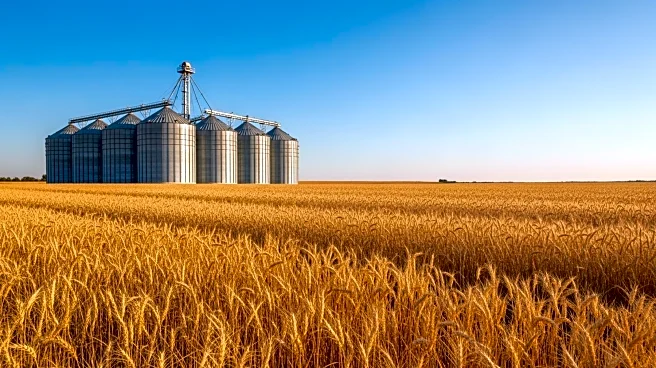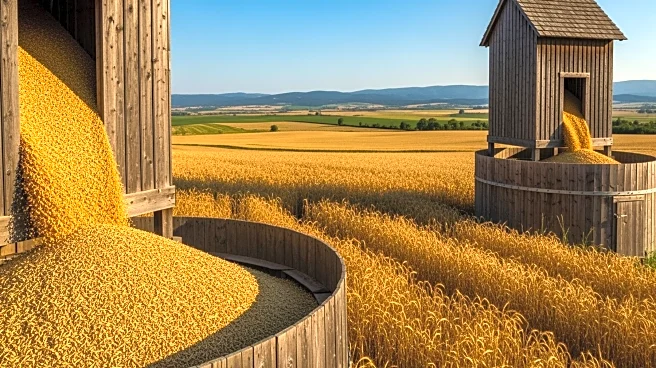What's Happening?
U.S. farmers are facing challenges with record grain production and limited storage space. The USDA's September World Agricultural Supply and Demand Estimates project corn production for 2025/26 at a record 16.8 billion bushels, significantly higher than
last year's 14.87 billion. Soybean production is also expected to increase, although export demand has decreased. Despite the growth in production, total storage capacity has only increased by 0.1% in 2024, leading to regional bottlenecks, particularly in major Corn Belt states like Iowa and Illinois. River transport delays further exacerbate congestion, creating pressure on farm profitability.
Why It's Important?
The strain on storage capacity amid record grain production poses significant challenges for U.S. farmers. With prices remaining low due to large carryover stocks, farmers face increased costs related to transportation and storage. The limited storage capacity could lead to inefficiencies and financial losses, impacting the agricultural sector's overall profitability. Additionally, the pause in October's WASDE report due to federal budget uncertainty adds to market instability, leaving stakeholders without crucial updates during peak harvest season.
What's Next?
Farmers and industry stakeholders will need to address storage and transportation challenges to mitigate potential losses. Solutions may include investing in additional storage infrastructure or optimizing logistics to improve efficiency. The agricultural sector will also monitor federal budget developments and potential policy changes that could impact market conditions. As the harvest season progresses, farmers will need to navigate space, timing, and liquidity issues to manage their operations effectively.
Beyond the Headlines
The current situation highlights the need for strategic planning and investment in agricultural infrastructure to support growing production levels. It also underscores the importance of policy stability and timely market information to aid decision-making. Long-term, the industry may explore innovative storage solutions and technologies to enhance capacity and reduce costs.














